Tags
broccoli, cabbage, cauliflower, garlic, olive oil, silverbeet
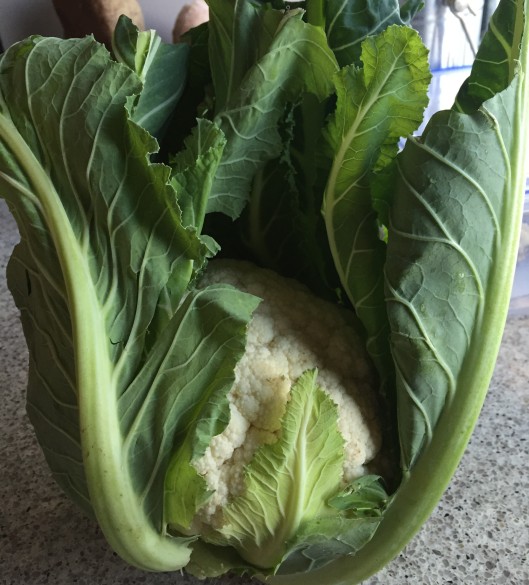
Ok, I admit the title is provocative!* But, for many people, (including me for many years) that’s where the stalks, leaves and cores of things like cauliflower and broccoli end up. Looking at the fresh, beautifully ruffled, bright green of the leaves shown here, it seems obvious they should be eaten in something, the question has always been what…
When you think about it, it seems strange that in a common plant family such as Brassicas – whose vegetable members we eat as flowers, leaves, stems and roots – we seem to have quite fixed ideas about which parts of the plant to eat. Brassicas include vegetables from cauliflower and broccoli (flowers), to cabbage, kale and rocket (leaves), gai lan and choy sum (stalks and leaves), kohlrabi (stalk), to turnips, radish and daikon (roots). Not to mention mustard (seeds). And for the most part, all parts of all of them are edible. Note I say edible, not necessarily palatable! I’m not going to start digging up my kale roots to munch on…
But, as I’ve mentioned previously, the leaves of radishes (and turnips) can be delicious, and as I will show you, so can the stalks and leaves of other Brassicas. Now, the pale green inner leaves, and much of the core of cauliflower (and broccoli if you can find one with leaves) can easily be cooked along with the rest of the florets, and you may well already do this. However, some parts are quite a bit tougher, and really need long slow cooking to become delicious, not always an easy step to work into a stir fry! I find this applies to the outer leaves and stalks of cauliflower and broccoli, as well as outer leaves and core of cabbage, stems of silverbeet (different plant family, same idea), and probably a few others I can’t think of at the moment.
Now you may wonder, why bother? Why bother cooking bits of vegetables you need to simmer for an hour (yes, sorry, I didn’t mention that part yet…) to become tender. Well apart from the fact that, as you already know, I really hate wasting food, look at the amount I got from one cauliflower… Half a kilogram of delicious greens, forming the basis of a couple of meals, that were effectively free!
One problem you may encounter is only finding vegetables that are already heavily trimmed so you don’t get any of those extras. All I can do is urge you to look for sources where you can get vegetables ‘au naturel’, and I’m pleased to say that more recently I’ve found even the big supermarkets are increasingly selling vegetables that way.
For this particular batch, as well as using the cauliflower leaves, I used up the stalks of the silverbeet leaves I had cooked in this pasta. Most of the resulting pesto was then used in a cauliflower risotto (also using some of the remaining cauliflower head) topped with chilli anchovy fried breadcrumbs made from this bread.
So do you use your vegetables root-to-tip? And if so tell me about your favourite uses.
*(and it’s probably not technically a pesto either, but you get the idea)
Compost pesto
Adapted from Tamar Adler’s An Everlasting Meal
- 500-700g surplus greens – can include stalk and leaves from cauliflower, broccoli stalks, cabbage outer leaves, silverbeet stems, turnip or beetroot leaves and stalks if too tough to steam or stir fry etc etc
- 4 -6 large cloves garlic
- 90 ml olive oil
- water to barely cover
- salt and pepper to taste
- parmesan to serve (optional)
Wash greens well (I soak in the salad spinner) then trim any damaged bits and cut off any particularly tough or stringy sections – I sometimes find the very bottom of cabbage stalks are a bit stringy for example. Chop roughly, ensuring you cut across stalks and stems so you won’t have any long strings in the final pesto.
Put in a big pot with the peeled garlic and oil, and add enough water to almost cover. Bring just to a boil, then reduce heat and and simmer, partly covered, until soft enough to mash. Depending what sort of stalks you use, this could take up to an hour. The water should be largely evaporated by this stage, but if there is still a lot of water left, increase temperature and cook uncovered until it is mostly gone.
Using a potato masher, mash until a rough paste. You can use an immersion blender if you prefer a smoother texture. Season with salt and pepper. You can add some grated parmesan at this stage, or leave it plain and add when serving.
This mixture has so many uses: I’ve added to omelettes, piled on hot toast, tossed through cooked grains or pasta, and stirred into risotto. It lasts a week in the fridge.
One year ago: Almond cake with syrupy blood oranges
For the other side of the world
Six months ago: Robyn’s pasties
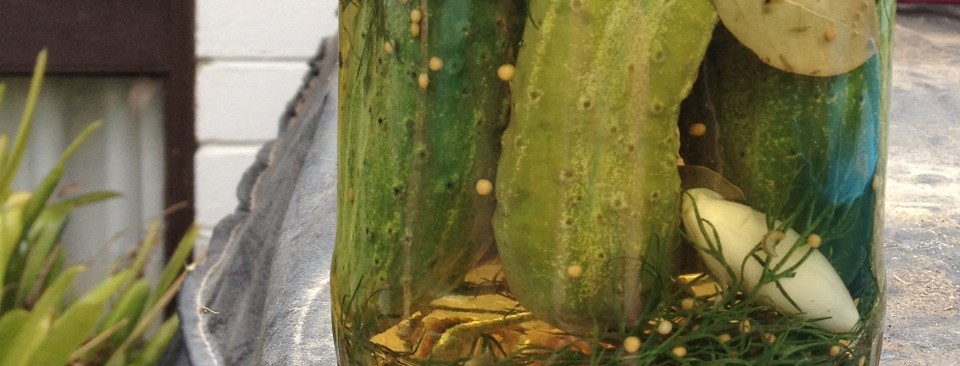
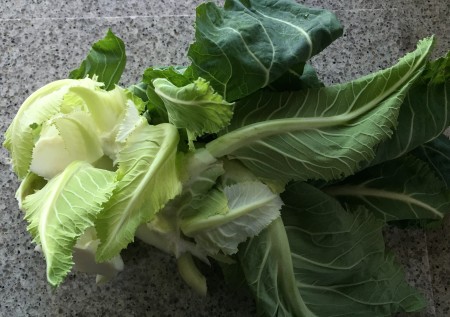
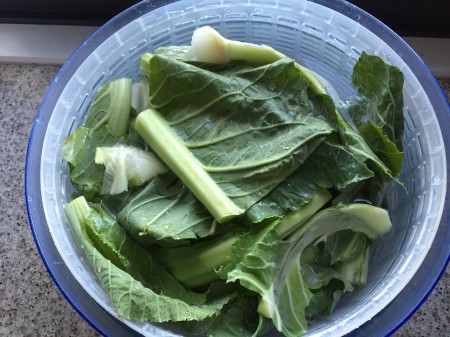
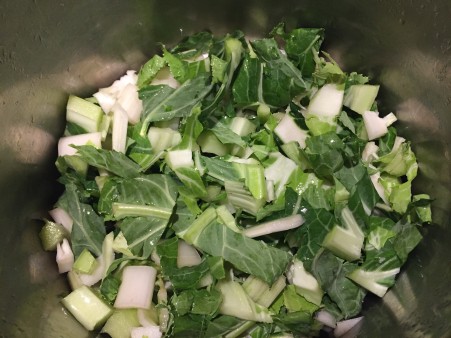
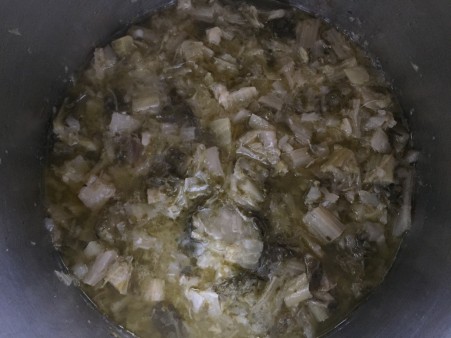
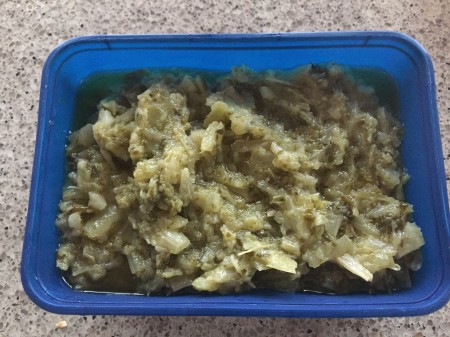
I often prefer the green leaves of brocolli and turnip- especialli with orecchiette pasta, but have never made a pesto, or anything else, with the roots. I might give it a go, but then my chooks would be mighty annoyed with me, depriving them of them crunchy bits.
Reminds me of that saying, “Eats, roots and leaves,” to describe some male behaviour.
LikeLiked by 1 person
thanks Francesca, yes I did think of that great Aussie saying when I was trying to think of a term for this type of eating vegetables 😉
LikeLiked by 1 person
Nice idea, Bec. Talking Brassicas… My mum always cooked brussells sprouts till they were very soft. And sprouts and cauliflower and broccoli florets often ended up in a breadcrumb and butter (browned) hash. As did well-cooked and finely chopped Silverbeet. I’m seeing a pattern here. I think the cauliflower pesto might go well that way too!
LikeLike
I remember the broccoli with breadcrumbs, but I’d forgotten the silverbeet, will have to try that again! The risotto I mention is actually finished off with browned breadcrumbs, so great minds… 🙂
LikeLike
Browned breadcrumbs is a much underrated addition to anything – including sweets (remember those farm cheese balls tossed in browned buttered breadcrumbs and then sugared?). Why not risotto then? Yum!
LikeLiked by 1 person
I abhor waste too. I have a fantastic pasta sauce recipe made with all of the the broccoli, a recipe I trot out when big bunches of leafy side shoots are in the market. I hope your post encourages some people to try using the ends
LikeLike
Thanks Sandra, I hope so too, though one of the issues is how much waste occurs before you even get hold of the veg – it can be quite hard to get hold of them complete before they’ve been ‘helpfully’ trimmed of any extra leaves or stalks…
LikeLike
Very interesting!
LikeLike
Thanks!
LikeLiked by 1 person
Pingback: Silverbeet (Chard), Coppa and Chilli Pasta | In Search of Golden Pudding
Pingback: Fennel Ice Cream | In Search of Golden Pudding
A remarkable recipe, truly… I love food and hate waste, so this is my kind of thing! xx
LikeLike
thank you! xx
LikeLike
Pingback: Very Green Marinated and Spiced Roast Chicken, Plus Leftover Ideas… | In Search of Golden Pudding
Pingback: 9 Ingenious Ways To Enjoy Kitchen Scraps While Reducing Food Waste
Pingback: Pearl Spelt with Sautéed Radishes and Radish Leaf Pesto | In Search of Golden Pudding
Pingback: Why not start at the beginning? | In Search of Golden Pudding
Pingback: Cauliflower Risotto with Crispy Crumbs | In Search of Golden Pudding